José Moreno
Emulation as an Accurate Alternative to Interpolation in Sampling Radiative Transfer Codes
Dec 07, 2020
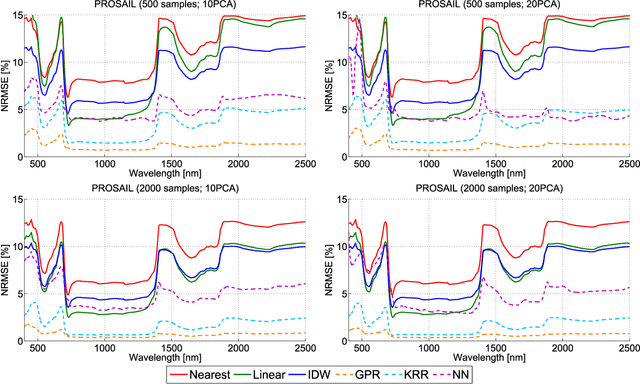

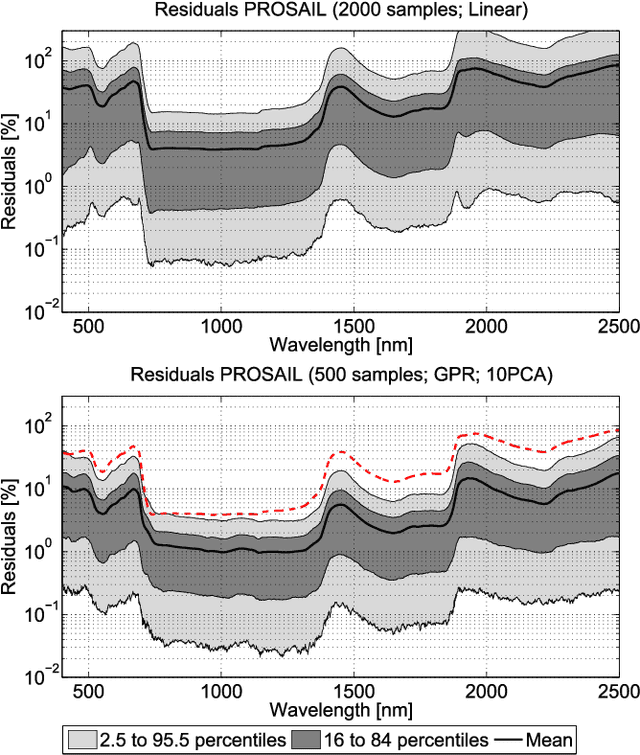
Abstract:Computationally expensive Radiative Transfer Models (RTMs) are widely used} to realistically reproduce the light interaction with the Earth surface and atmosphere. Because these models take long processing time, the common practice is to first generate a sparse look-up table (LUT) and then make use of interpolation methods to sample the multi-dimensional LUT input variable space. However, the question arise whether common interpolation methods perform most accurate. As an alternative to interpolation, this work proposes to use emulation, i.e., approximating the RTM output by means of statistical learning. Two experiments were conducted to assess the accuracy in delivering spectral outputs using interpolation and emulation: (1) at canopy level, using PROSAIL; and (2) at top-of-atmosphere level, using MODTRAN. Various interpolation (nearest-neighbour, inverse distance weighting, piece-wice linear) and emulation (Gaussian process regression (GPR), kernel ridge regression, neural networks) methods were evaluated against a dense reference LUT. In all experiments, the emulation methods clearly produced more accurate output spectra than classical interpolation methods. GPR emulation performed up to ten times more accurately than the best performing interpolation method, and this with a speed that is competitive with the faster interpolation methods. It is concluded that emulation can function as a fast and more accurate alternative to commonly used interpolation methods for reconstructing RTM spectral data.
Spectral band selection for vegetation properties retrieval using Gaussian processes regression
Dec 07, 2020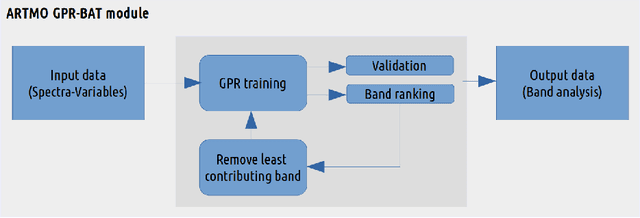
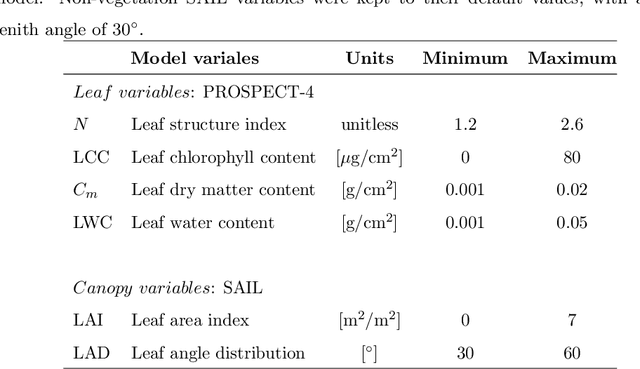

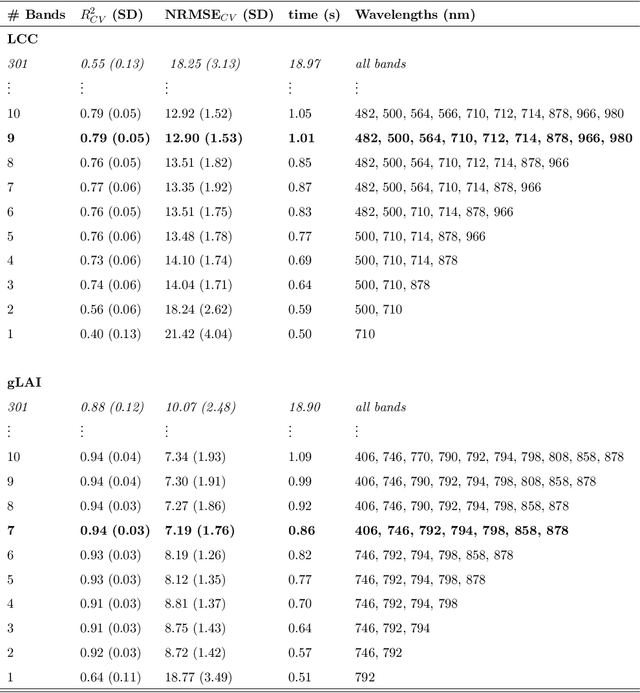
Abstract:With current and upcoming imaging spectrometers, automated band analysis techniques are needed to enable efficient identification of most informative bands to facilitate optimized processing of spectral data into estimates of biophysical variables. This paper introduces an automated spectral band analysis tool (BAT) based on Gaussian processes regression (GPR) for the spectral analysis of vegetation properties. The GPR-BAT procedure sequentially backwards removes the least contributing band in the regression model for a given variable until only one band is kept. GPR-BAT is implemented within the framework of the free ARTMO's MLRA (machine learning regression algorithms) toolbox, which is dedicated to the transforming of optical remote sensing images into biophysical products. GPR-BAT allows (1) to identify the most informative bands in relating spectral data to a biophysical variable, and (2) to find the least number of bands that preserve optimized accurate predictions. This study concludes that a wise band selection of hyperspectral data is strictly required for optimal vegetation properties mapping.
Active Learning Methods for Efficient Hybrid Biophysical Variable Retrieval
Dec 07, 2020


Abstract:Kernel-based machine learning regression algorithms (MLRAs) are potentially powerful methods for being implemented into operational biophysical variable retrieval schemes. However, they face difficulties in coping with large training datasets. With the increasing amount of optical remote sensing data made available for analysis and the possibility of using a large amount of simulated data from radiative transfer models (RTMs) to train kernel MLRAs, efficient data reduction techniques will need to be implemented. Active learning (AL) methods enable to select the most informative samples in a dataset. This letter introduces six AL methods for achieving optimized biophysical variable estimation with a manageable training dataset, and their implementation into a Matlab-based MLRA toolbox for semi-automatic use. The AL methods were analyzed on their efficiency of improving the estimation accuracy of leaf area index and chlorophyll content based on PROSAIL simulations. Each of the implemented methods outperformed random sampling, improving retrieval accuracy with lower sampling rates. Practically, AL methods open opportunities to feed advanced MLRAs with RTM-generated training data for development of operational retrieval models.
 Add to Chrome
Add to Chrome Add to Firefox
Add to Firefox Add to Edge
Add to Edge